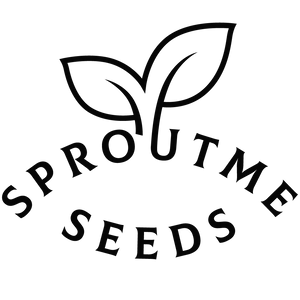Pumpkin Connecticut Field
Pumpkin Connecticut Field is a classic variety prized for its large size and traditional pumpkin appearance. Whether for Halloween decorations or homemade pumpkin pies, growing your own pumpkins can be a rewarding experience that yields delicious results.
Preparing for Growing:
- Selecting a planting location: Choose a sunny location with plenty of space for the sprawling vines of Connecticut Field pumpkins.
- Soil preparation: Prepare the soil by loosening it to a depth of at least 12 inches and incorporating plenty of organic matter like compost or aged manure.
- Purchasing or preparing containers/pots: Pumpkins are typically grown directly in the ground due to their large size, but if space is limited, choose large containers or raised beds.
Starting from Seeds Indoors:
- Seed preparation: Pumpkin seeds do not require any special preparation.
- Choosing suitable pots/containers: Use biodegradable pots or peat pots that can be planted directly into the ground to minimize root disturbance during transplanting.
- Sowing and caring for seeds indoors: Plant seeds 1 inch deep in pots filled with seed starting mix. Keep the soil consistently moist and provide warmth and adequate light for germination.
- Transplanting to larger containers if necessary: If seedlings outgrow their pots before the last frost date, transplant them into larger containers to prevent root crowding.
Starting from Seeds Outdoors:
- Soil preparation: Prepare a fine seedbed by removing weeds and debris and amending the soil with compost.
- Selecting appropriate timing and method for outdoor sowing: Wait until after the last frost date to sow seeds directly into the garden when soil temperatures are at least 60°F.
- Caring for seeds outdoors: Keep the soil evenly moist until seeds germinate, which usually takes 7-10 days.
Growing in Containers/Pots:
- Selecting suitable plants for containers: Choose smaller pumpkin varieties or bush-type pumpkins specifically bred for container growing.
- Container and soil preparation: Use large containers with drainage holes and fill them with a well-draining potting mix enriched with compost.
- Sowing or transplanting plants into containers: Plant seeds or transplant seedlings into containers, ensuring they have enough space to spread.
- Caring for container plants: Water regularly to keep the soil evenly moist, and fertilize every 2-3 weeks with a balanced fertilizer.
Transplanting to Garden:
- Soil and planting site preparation: Prepare the planting site by digging a hole twice as wide and deep as the root ball of the seedling. Amend the soil with compost and ensure proper drainage.
- Correct timing and method for transplanting: Transplant seedlings when they have 2-3 true leaves, spacing them 4-6 feet apart in rows spaced 8-12 feet apart.
- Post-transplant care: Provide support for sprawling vines with trellises or allow them to spread across the ground. Mulch around plants to retain moisture and suppress weeds.
Plant Care:
- Watering: Pumpkins require consistent moisture, especially during flowering and fruiting. Water deeply once or twice a week, depending on weather conditions.
- Fertilizing: Apply a balanced fertilizer or compost tea every 3-4 weeks to promote healthy growth and fruit development.
- Weeding: Keep the area around pumpkin plants free of weeds to reduce competition for nutrients and water.
- Pest and disease management: Monitor for pests such as squash bugs and cucumber beetles, and diseases like powdery mildew and vine borers. Use row covers, organic insecticides, or fungicides as needed.
Harvesting:
- Determining when plants are ready for harvest: Pumpkins are ready for harvest when they reach full color and the rinds are hard. The stem should be dry and corky.
- Harvesting and storage guidelines: Use a sharp knife to cut pumpkins from the vine, leaving a few inches of stem attached. Cure pumpkins in a warm, dry place for 10-14 days before storing in a cool, dark location.
When to Start from Seeds by USDA Plant Hardiness Zones:
- USDA Zones 3-7: Start seeds indoors 2-4 weeks before the last frost date for transplanting outdoors after the danger of frost has passed.
- USDA Zones 8-10: Pumpkins can be directly sown outdoors after the danger of frost has passed.
Fast Facts:
- Planting depth: 1 inch
- Seed spacing: 3-4 feet between hills
- Plant spacing: 4-6 feet apart in rows spaced 8-12 feet apart
- Number of seeds per pot/container: 1-2 seeds per pot, thinning to the strongest seedling
- Water preferences: Evenly moist soil
- Sun preferences: Full sun
- Soil type and other important factors: Well-draining loamy soil with a pH of 6.0-7.0
- Companion Planting: Pumpkins benefit from companion planting with crops like corn, beans, and marigolds, but avoid planting them near potatoes or other members of the squash family.
- Temperature Preference: Warm-season crop, prefers temperatures between 70-85°F.
- Days to Germination: 7-10 days
- Days to Harvest: 90-120 days after planting, depending on the variety and growing conditions.







